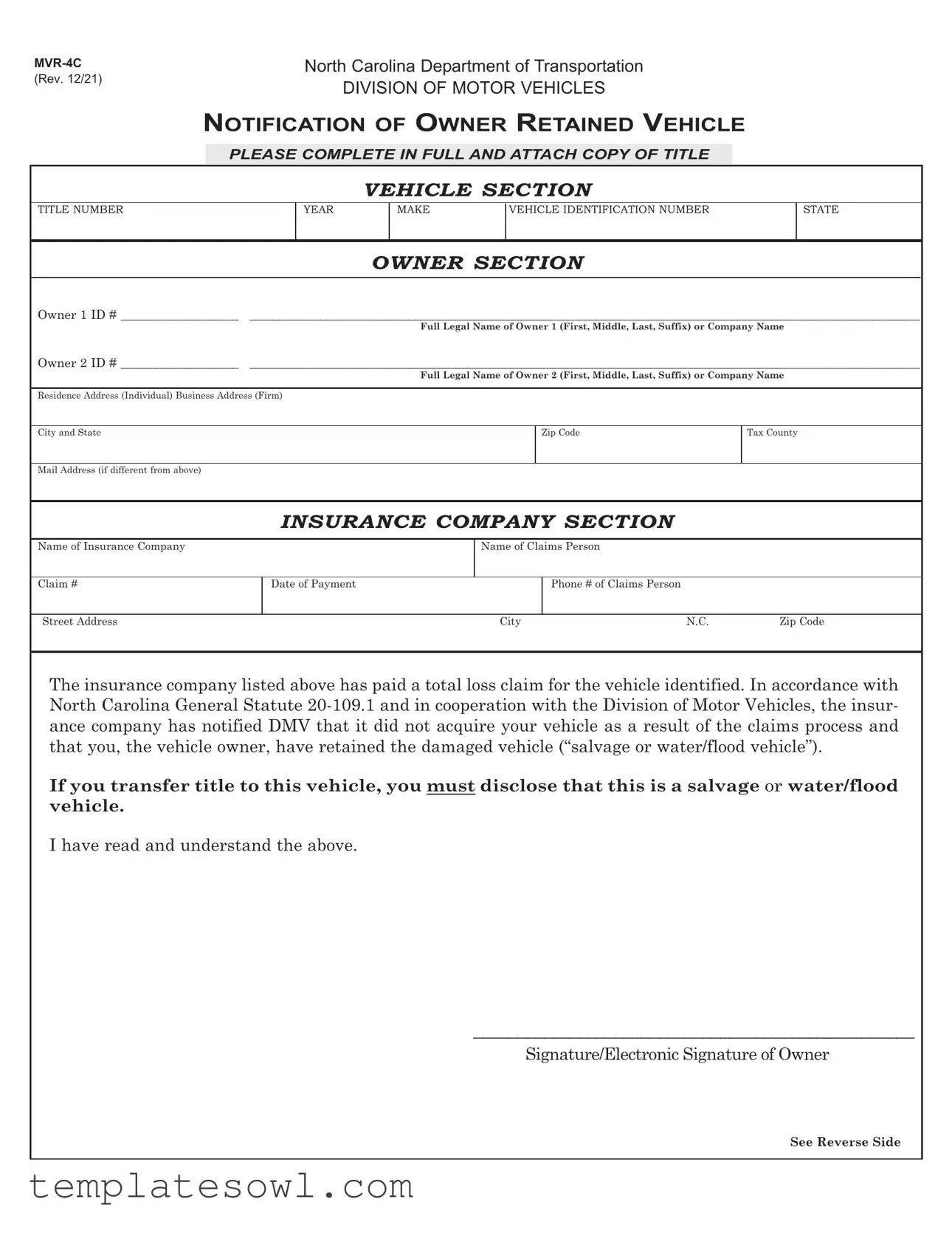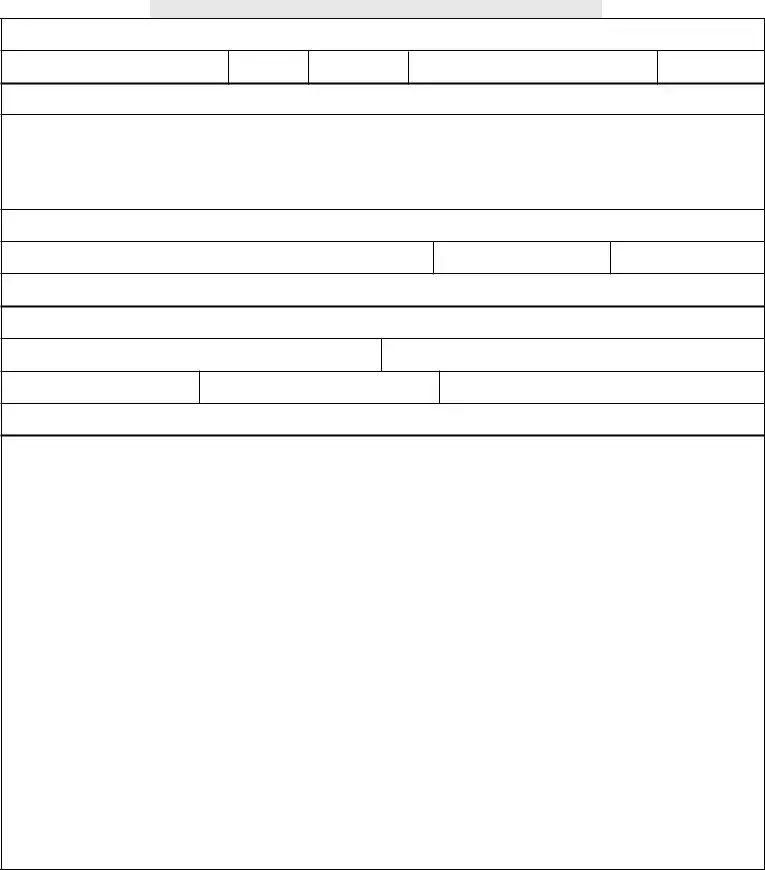North Carolina Department of Transportation
DIVISION OF MOTOR VEHICLES
NOTIFICATION OF OWNER RETAINED VEHICLE
PLEASE COMPLETE IN FULL AND ATTACH COPY OF TITLE
VEHICLE SECTION
VEHICLE IDENTIFICATION NUMBER
OWNER SECTION
Owner 1 ID # ____________________ __________________________________________________________________________________________________________________
Full Legal Name of Owner 1 (First, Middle, Last, Suffix) or Company Name
Owner 2 ID # ____________________ __________________________________________________________________________________________________________________
Full Legal Name of Owner 2 (First, Middle, Last, Suffix) or Company Name
Residence Address (Individual) Business Address (Firm)
Mail Address (if different from above)
INSURANCE COMPANY SECTION
Name of Insurance Company
The insurance company listed above has paid a total loss claim for the vehicle identified. In accordance with North Carolina General Statute 20-109.1 and in cooperation with the Division of Motor Vehicles, the insur- ance company has notified DMV that it did not acquire your vehicle as a result of the claims process and that you, the vehicle owner, have retained the damaged vehicle (“salvage or water/flood vehicle”).
If you transfer title to this vehicle, you must disclose that this is a salvage or water/flood vehicle.
I have read and understand the above.
__________________________________________________
Signature/Electronic Signature of Owner
G.S. 20-109.1. Surrender of titles to salvage vehicles.
(a)Option to Keep Title. — When a vehicle is damaged to the extent that it becomes a salvage vehicle and the owner submits a claim for the damages to the insurer of the vehicle, the insurer must determine whether the owner wants to keep the vehicle after payment of the claim, the procedures in subsection (b) of this section apply. If the owner wants to keep the vehicle after payment of the claim, the procedures in subsection (c) of this section apply.
(b)Transfer to Insurer. — If a salvage vehicle owner does not want to keep the vehicle, the owner must assign the vehicle’s certificate of title to the insurer when the insurer pays the claim. The insurer must send the assigned title to the Division within 10 days after receiving it from the vehicle owner. The Division must then send the insurer a form to use to transfer title to the vehicle from the insurer to a person who buys the vehicle from the insurer. If the insurer sells the vehicle, the insurer must complete the form and give it to the buyer. If the buyer rebuilds the vehicle, the buyer may apply for a new certificate of title to the vehicle.
(c)Owner Keeps Vehicle. — If a salvage vehicle owner wants to keep the vehicle, the insurer must give the owner an owner-retained salvage form. The owner must complete the form and give it to the insurer when the insurer pays the claim. The insurer must send the completed form to the Division within 10 days after receiving it from the vehicle owner. The Division must then note in its vehicle registration records that the vehicle listed on the form is a salvage vehicle.
(d)Theft Claim on Salvage Vehicle. — An insurer that pays a theft loss claim on a vehi- cle and, upon recovery of the vehicle, determines that the vehicle has been damaged to the extent that it is a salvage vehicle must send the vehicle's certificate of title to the Division within 10 days after making the determination. The Division and the insurer must then fol- low the procedures set in subsection (b) of this section.
(e)Out-of-State Vehicle. — A person who acquires a salvage vehicle that is registered in a state that does not require surrender of the vehicle’s certificate of title must send the title to the Division within 10 days after the vehicle enters this State. The Division and the per- son must then follow the procedures set in subsection (b) of this section.
(f)Sanctions. — Violation of this section is a Class 1 misdemeanor. In addition to this criminal sanction, a person who violates this section is subject to a civil penalty of up to one hundred dollars ($100.00), to be imposed in the discretion of the Commissioner.
G.S. 20-85 sets the fee for issuing a salvage certificate of title.

